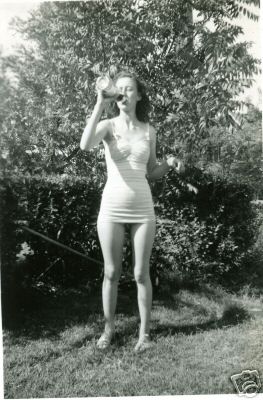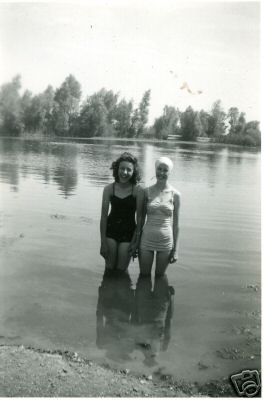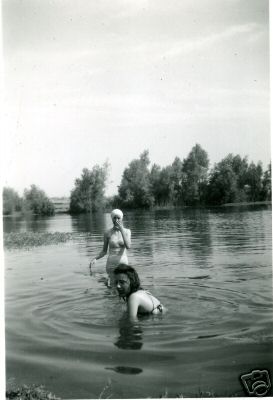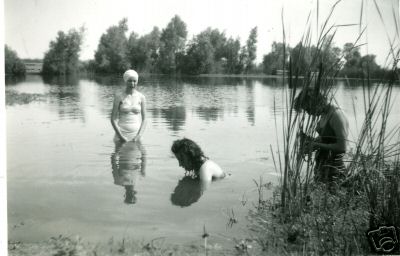more from the arkansas photo vendor...
 
 
Bottom right is a beaut. Looks like some weird DIY baptism.
yeah, a baptisim. i know i appear to be on thin ice here. but i didnt take these pictures. i cant quite tell who took them. it might have been a man or a woman. in this case i think at least the lake shots are by a woman. sometimes you can see a photographers shadow. sometimes you just sense gender with no shadow. what im calling for is an analysis of these genre objects (snap shots) and their mileu (amateur - or - vernacular photography). the following october essay is the type of investigative process im proposing for developing an understanding of the social record left behind by all these people from the twentieth century with their polaroid and brownie cameras :
Theory as an Object
Juliet Mitchell pp. 27 - 38
From the first page:
To consider the question of theory as an object, I am going to reverse a trend and resort in the first instance to anthropomorphism. I am on safe analytic grounds, for in object relations psychoanalysis, the “object” is a person, invariably someone of significance to the subject. That a person should be seen as an object was offensive to second-wave feminism, which, with some justification, felt that behind the idealization of the mother was the denigration of the woman as a “sexual object.” That the feminine occupies the position of object, not subject, is endorsed in Lacan’s rereading of Freud. If we anthropomorphize theory, where does theory stand in the gender stakes? A few months after the revolutionary moment of May 1968, Donald Winnicott, extraordinary pediatrician and important psychoanalyst, gave a brief paper to the New York Psychoanalytic Society entitled “The Use of an Object and Relating through Identification.”1 A theme of his argument is the positive use of destructiveness, which, given the date of his presentation, suggests that Winnicott, unlike several other colleagues, may implicitly have been on the side of demonstrating youth who hoped (in vain, as it turned out) that May ’68 was “the beginning of the end.” I am going to use Winnicott’s brief, and apparently simple, paper as a focal point. But first I need to situate myself autobiographically in the discussion about art, criticism, and psychoanalytic theory that this issue of October is attempting to open up. I am not an art critic or historian; the nearest I can come to understanding the problems posed by art to psychoanalysis is through literature, which is the field of my original training. My own entry into psychoanalysis came about through the exigencies of the predicament of women. When I was first interested in the position of women in the early 1960s, women did not exist, in a sense rather different from Lacan’s formulation “the woman does not exist,” though ultimately connected to that gnomic utterance. Women were classified as wives of their husbands or daughters of their fathers. In Sheila Rowbottom’s words, they were “hidden from history.”
OCTOBER Vol. 113 - Summer 2005 downloadable for $8.00
|
- bill 8-27-2005 10:49 pm
- bill 8-27-2005 10:52 pm [add a comment]
Bottom right is a beaut. Looks like some weird DIY baptism.
- tom moody 8-27-2005 11:33 pm [add a comment]
yeah, a baptisim. i know i appear to be on thin ice here. but i didnt take these pictures. i cant quite tell who took them. it might have been a man or a woman. in this case i think at least the lake shots are by a woman. sometimes you can see a photographers shadow. sometimes you just sense gender with no shadow. what im calling for is an analysis of these genre objects (snap shots) and their mileu (amateur - or - vernacular photography). the following october essay is the type of investigative process im proposing for developing an understanding of the social record left behind by all these people from the twentieth century with their polaroid and brownie cameras :
OCTOBER Vol. 113 - Summer 2005 downloadable for $8.00- bill 8-28-2005 9:55 pm [add a comment]